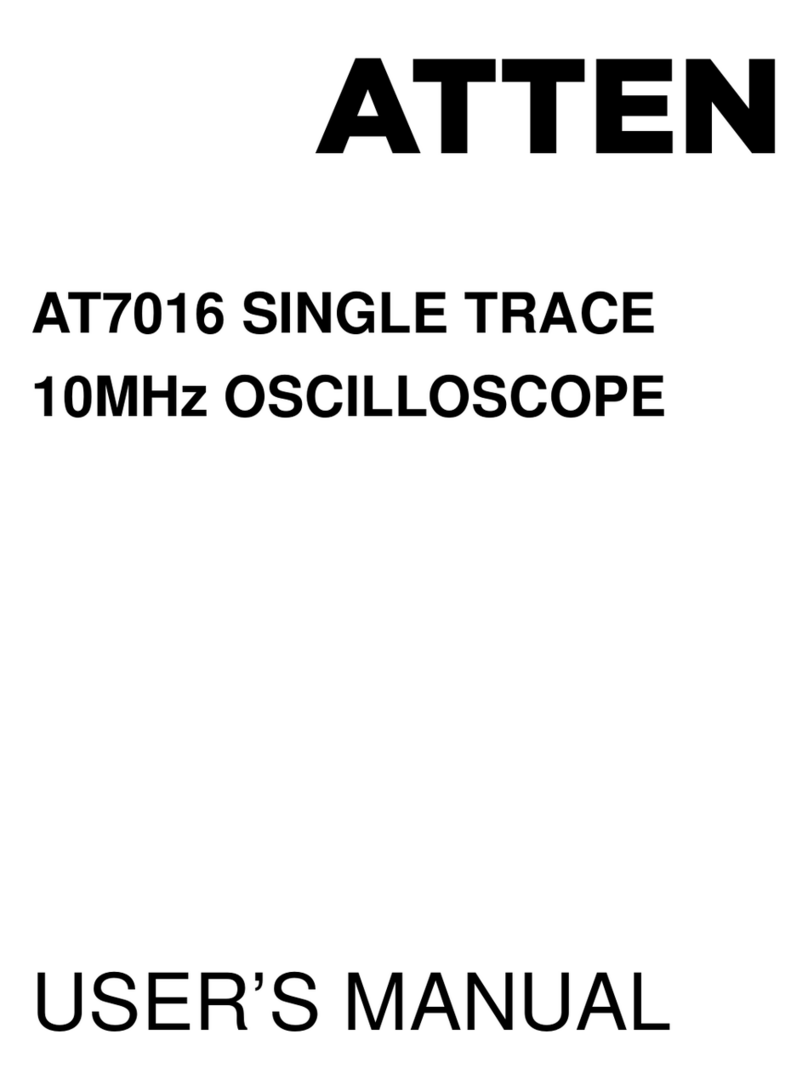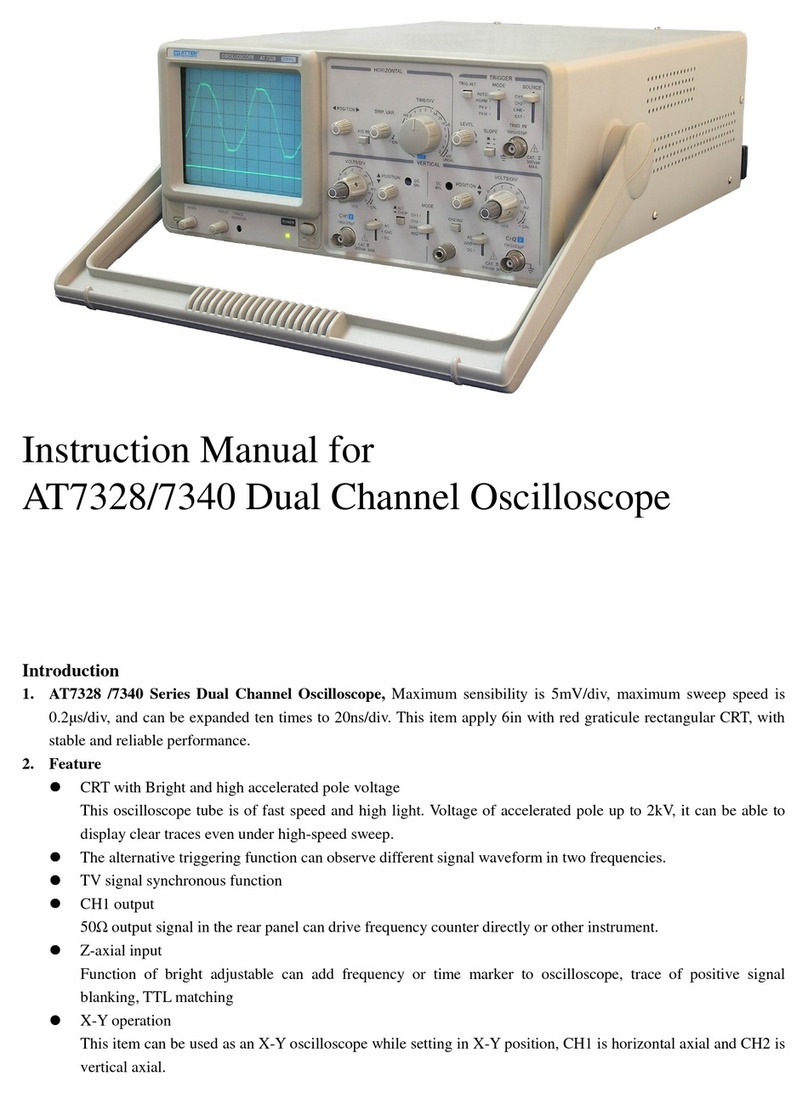
Service Manual
Catalogue
Document Summarize.......................................................................................................................6
Chapter 1 Specifications ...................................................................................................................8
Specifications............................................................................................................................8
Generic Specifications ............................................................................................................12
Chapter 2 Prepare for Use...............................................................................................................13
General Inspecting ..................................................................................................................14
Power-On Inspection...............................................................................................................15
Probe Compensation...............................................................................................................16
Auto Setup ..............................................................................................................................17
Chapter 3 Performance Test............................................................................................................19
Interface Test...........................................................................................................................20
USB Host Test................................................................................................................20
USB Device Test.............................................................................................................21
RS-232 Test.....................................................................................................................22
Pass/Fail Test...................................................................................................................24
Specification Test....................................................................................................................25
Test DC Gain Accuracy...................................................................................................25
Test Bandwidth................................................................................................................26
Test Trigger Sensitivity...................................................................................................27
Test Noise........................................................................................................................27
Chapter 4 Calibration......................................................................................................................28
Self Calibration.......................................................................................................................28
Chapter 5 Disassembly and Assembly............................................................................................30
Notice......................................................................................................................................31
Disassemble and Assemble On-off and Knobs.......................................................................32
Disassemble and Assemble Back Rind...................................................................................33
Disassemble and Assemble Back Cover Board.......................................................................34
Disassemble and Assemble Top Cover Board.........................................................................35
Disassemble and Assemble Fan..............................................................................................36
Disassemble and Assemble power board................................................................................37
Disassemble and Assemble Metal Shelf .................................................................................38
Disassemble and Assemble Main board..................................................................................39
Disassemble and Assemble LCD............................................................................................40
Disassemble and Assemble Keyboard ....................................................................................41
Chapter 6 Prompting Messages and Troubleshooting.....................................................................42
Prompting messages:...............................................................................................................42
Troubleshooting ......................................................................................................................44
Chapter 7 Updating Parts................................................................................................................45





























